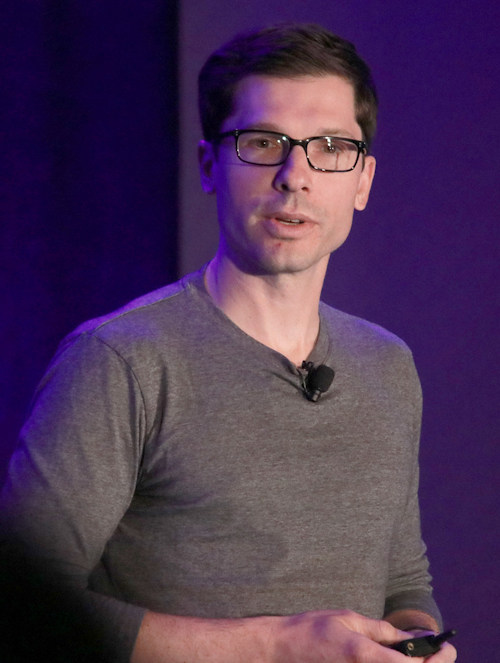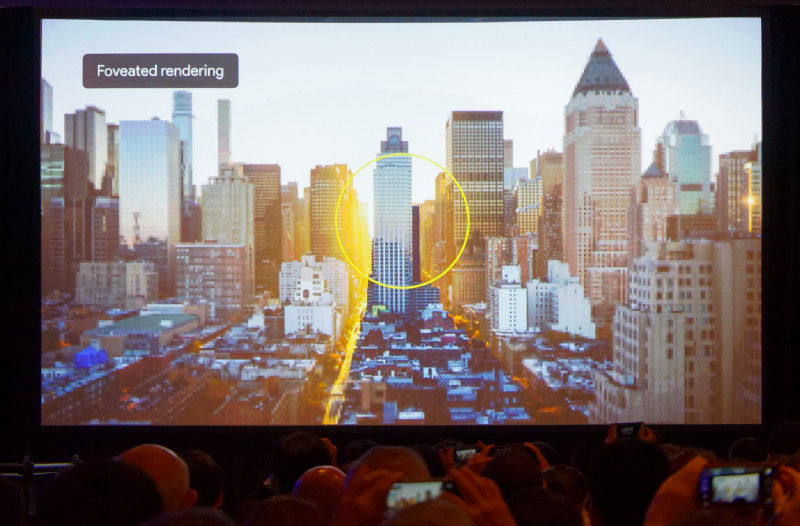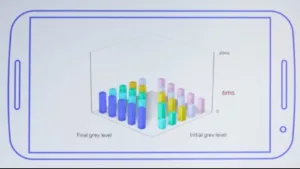 Clay Bavor is from Google where he is the VP responsible for AR & VR. After checking with the audience how many people had tried ‘good VR’, he explained that when he introduces people to VR, he shows them a diving board experience. The app simulates being taken up to a diving board, apparently at 150′ (45m) above ground. He said that people automatically lower their centre of gravity by bending their knees and most people simply can’t step off the diving board, even though, intellectually, they know that they are in a meeting room. VR can take you anywhere, Bavor said, whereas AR can bring anything to you.
Clay Bavor is from Google where he is the VP responsible for AR & VR. After checking with the audience how many people had tried ‘good VR’, he explained that when he introduces people to VR, he shows them a diving board experience. The app simulates being taken up to a diving board, apparently at 150′ (45m) above ground. He said that people automatically lower their centre of gravity by bending their knees and most people simply can’t step off the diving board, even though, intellectually, they know that they are in a meeting room. VR can take you anywhere, Bavor said, whereas AR can bring anything to you.
“VR can take you anywhere, AR can bring anything to you”.
VR and AR are not distinct experiences, he believes, but points in a spectrum of immersive computing. He said that computing that works more like we do expands the use of computers.
The Google Cardboard initiative has been very successful, the headsets have been used by an order of magnitude more people than other headsets. Now, Google has been working on the Daydream platform and also improving Android to reduce latency.
There are more than a dozen Daydream phones, Bavor said and the platform will have sold ‘tens of millions’ of units by the end of next year. Now, there is also a standalone VR concept that was shown at Google IO, and in a dedicated system, everything can be optimised. Bavor also said that new desktop PCs are being developed for VR.
Bavor said that the ’tilt brush’ an app for painting in VR is providing new ways to use your body and space. There are lots of building blocks that need to be developed for VR & AR. Worldsense, or understanding the environment around the user is one building block. Another is seamless 360º video but many more are needed for long term use.
Basically, Bavor said, everything has to get better – weight , industrial design, the displays, speed etc.
LCD is currently the main display for smartphones and they are not ideal for VR because of latency and blurring. Head motion should be instantly reflected for good VR. Can LCD do what OLED does? Google has been working with Sharp on an LCD for fast response time. The normal response is up to 20ms for the display alone, but that is too much on top of system latency.
Sharp has now got below 6ms for LCD switching at all grey scales. There are also issues if you have an “always on” backlight – a strobing backlight is OK but you have to wait for the display to be ready, so you lose a couple of ms, Bavor said.
 Google has worked with Sharp to develop LCDs that have 6ms or shorter response times for all grey scales
Google has worked with Sharp to develop LCDs that have 6ms or shorter response times for all grey scales
Bavor said that Google is working on a rolling backlight that can mean dramatic improvements in performance to bring faster displays for VR (although later I heard grumbles from some in the audience that thought that Bavor had got this wrong – Man. Ed.)
Visual quality especially matching the acuity of human vision and extending the field of view are still outstanding issues. A year ago Google made a concept video – its April fool’s joke of April 2016 – and in it the VR headset is just like plain glass. In one sense, that’s what you want from AR, Bavor said.
At the moment, the displays for VR are rated as equivalent to 20/100 vision – that’s worse than the vision you need for driving which is 20/40 or 20/50, depending where in the US you live. On today’s headsets, you couldn’t read a newspaper so there’s quite a long way to go in acuity. Human field-of-view is around 200º but the best headsets today are limited to 110º – to increase both, you need way, way more pixels, Bavor said.
Today, displays for VR are around two megapixels. However, Bavor said that Google is working to develop a headset with 20 megapixels per eye. The display has been created with “a major OLED maker” – in the lab, Bavor said, it’s ‘spectacular’. He still wants more spatial resolution, but this development is a very big step in the right direction, in his view.
 Google sees foveated rendering as a way to overcome the barriers to processing the huge pixel counts of high resolution displays.
Google sees foveated rendering as a way to overcome the barriers to processing the huge pixel counts of high resolution displays.
There is a challenge to dealing with this number of pixels. The answer is foveated rendering. The human optic nerve has a bandwidth equivalent to 10Mb/sec, so if you render to match that, you can dramatically change the level of bit rate needed and that makes things much more feasible.
He believes a wave of VR & AR is coming and one question is when to start investing. He said that in surfing a wave, you need to start to paddle before the wave… Now is the time to invest.
Analyst Comment
BOE was showing an OLED with around 20 megapixels on the show floor, although I’m not sure I’d describe BOE as a major supplier of OLEDs, at least, not yet. (BR)

